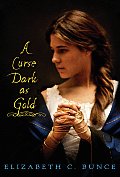 “‘Have you ever wanted to be a princess?’ Ash challenged her.
“‘Have you ever wanted to be a princess?’ Ash challenged her.
‘That depends,’ Kaisa said.
‘On what?’
‘On whether I would have to marry a prince.'” (pg. 199)
I love fairytale re-tellings, but I find that many of them fall into two camps that make them less rewarding to read: either the author is so faithful to the original story that there is very little mystery and the reader has little new to discover, or the re-telling is so widely divergent from the original story that the reader loses the added depth of meaning that the base of a traditional story can bring to a novel. Ash is one of the re-tellings I’ve read that manages to walk the fine line between those two extremes, finding ways to make the story fresh and new while expanding and building on the original fairytale’s themes.
Ash was brought up on her mother’s tales of fairies – menacing stories that have horrible consequences for the mortals who get involved in the fairy world. But her father and her new stepmother have no faith in the old stories, so Ash keeps her worries to herself even as she is slowly getting pulled into a strange sort of friendship with a fairy who seems to be protecting her. Even though Ash is constantly aware of the fact that the stories never end well for mortals, and that every thing she gains from her fairy protector will make her consequences deeper, she almost seems to court the danger of the fairy stories. And of course her father dies, and of course she is pressed into service in her stepmother’s house. But then some thing unexpected happens – over and over again Ash finds herself in the company of Kaisa, the King’s Huntress. And soon she finds herself seeking out Kaisa’s company.
Malindo Lo creates a lovely and atmospheric world, where the woods are deep and full of magic and the important things are often expressed through fairy stories. The writing is lyrical and has the feel of a traditional fairy tale, but I did find the pacing a bit off – slow in the first half of the book, and then rushed in the second half. I found myself wishing that the ending, especially the climactic scene between Ash and the fairy Sidhean, had been fleshed out further and given more time to develop. This was definitely one of those books where you take a look at how many pages are left and wonder how the story can possibly be resolved before you run out of book. And while it was resolved, it did leave me wanting a little bit more.
The love between Kaisa and Ash is refreshingly not one in which the characters are swept off their feet. It grows slowly and naturally, starting with curiosity and awkward conversations and moving into a wonderful slow-burning tension between the two characters. Also refreshing was the lack of any agonized questioning of Ash’s sexuality – while she sometimes seems surprised to be falling in love with a woman, the different genders of her potential lovers do not seem to play in her decision. All in all, this was a book that I really enjoyed. I will be looking forward to more from Malinda Lo.
Malindo Lo on the web.

